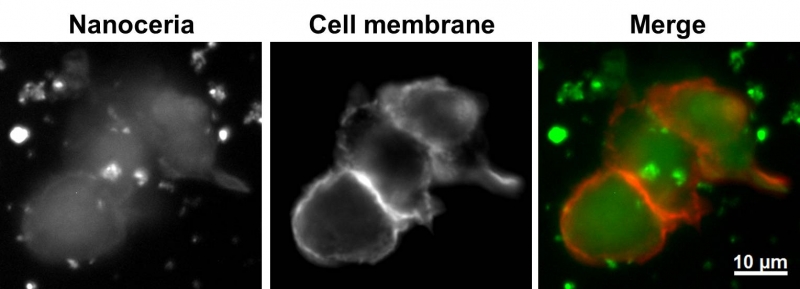Free radicals or reactive oxygen species (ROS) have been implicated to the pathogenesis of various human diseases, such as cancer, chronic inflammation, neurodegenerative disorders, ophthalmologic conditions and even bacterial and viral infectious diseases. Quite recently, development of cerium oxide (ceria)-based ROS neutralising therapeutics has received escalating expectation due to the particle intrinsic Ce3+/Ce4+ switchable property. The redox cycling facilitates reversible storing and release of oxygen, which renders ceria as potential self-regenerating ROS scavenger.
The present project aims to study the particle-protein interactions of ceria nanoparticles (3, 7, 14 nm) in biological fluid containing serum proteins. The particle-protein interactions are key factors on the stability of particles in biological environment, which will significantly affect the cellular responses on the particles. This in turn will determine the efficiency of the in vivo therapeutic applications of the particles.
Publications:
- M.S. Lord, M. Jung, W.Y. Teoh, C. Gunawan, J. Vassie, R. Amal, J. Whitelock,
Cellular uptake and and reactive oxygen species modulation of cerium oxide nanoparticles in human monocyte cell line U937, B
iomaterials, 33 (2012), pp. 7915–7924
- S.R. Simon Ting, John M. Whitelock,Romana Tomic,Cindy Gunawan,Wey Yang Teoh, Rose Amal, Megan S. Lord, Cellular uptake and activity of heparin functionalised cerium oxide nanoparticles in monocytes, Biomaterials, 34 (2013), 4377 – 4386
Investigators:
Cindy Gunawan
Megan Lord (Biomed)
Wey Yang Teoh (CUHK)
Rose Amal
Collaborators:
City University of Hong Kong ;
Funding:
ARC Discovery DP1097149
